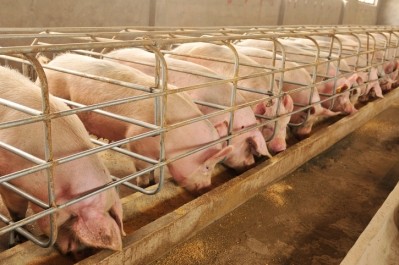Improving feed efficiency in Australian pork production: 'It can be done'

Pork CRC’s global benchmarking project found that the Netherlands leads the world on feed efficiency, reporting a herd feed conversion (HFC - total feed divided by total carcass weight produced) of 3.4 for 2016. The UK was the worst performer, with most other countries running fairly close together. The average HFC for Australia was 3.73 against the CRC’s target of 3.4.
“Australia was competitive with the US, Canada and Denmark and better than the UK, with the Netherlands leading the pack,” Dr Roger Campbell, CEO of Pork CRC, told FeedNavigator.
Benchmarking project
Involving some 23 herds and 80,000 sows, the benchmarking project compares the performance of participants in key areas.
“Participants compare how each is doing and who made the greatest improvements over the 12 months and over a longer period of time. They openly discuss how they made the progress they did. We also use the results to compare where the Australian industry sits globally,” explained Dr Campbell.
He said that Australian pork producers were competitive for feed efficiency, but that it was a key performance indicator that had “unfortunately” remained static for some time and was “well below the capability of available genetics”.
For example, the average feed: gain between weaning and sale (100kg) for Australian producers in the project was 2.4 (on a live weight basis), against a target of 2.0.
However, he cited research results that have shown that the feed: gain of pigs between 38 and 100kg is only 3.8 for females. The latter equates to a feed: gain between weaning and sale of closer to 2.0 than 2.4 and to an HFC close to the target of 3.4, said Dr Campbell.
Bridging the gap
Explaining the disparity between research results and commercial reality, he said: “Our genetics are excellent and very efficient but this efficiency is not being achieved commercially. The reason is probably multi-faceted and includes feed wastage, clinical and sub clinical disease, activation of the immune system, overstocking for short periods as pigs approach sale weight and pigs being below and - to a lesser extent - above their thermoneutral zones.”
The best herds in the benchmarking project reported feed: gains between weaning and sale of 2.0 and HFC values closer to 3.4 than 3.7, which Dr Campbell said “can be done”.
He suggested that improving feed efficiency was “probably largely a matter of fully understanding the importance of HFC in determining profitability, setting a target for all involved and paying more attention to detail”.
He said he expected further enhancements to come out of the call by the Australasian Pork Research Institute Limited (APRIL) for research proposals to enhance the competitiveness and sustainability of the Australasian pork industry.
“The call closed on the 18th February and received some 40 proposals, ranging from novel means of monitoring and improving health, improving reproduction and alleviating summer infertility to a couple on enhancing genetic progress across the Australian herd,” said Dr Campbell.
Those projects selected by APRIL are expected to begin in July.








